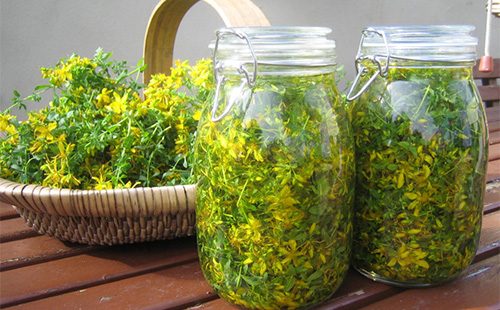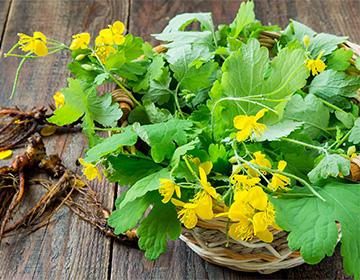The content of the article
The official name is given to this representative of the Makov family for the ability to cleanse the body of warts, papillomas, and various growths. And the folk - browning - is due to the favorite place of grass growth: the will of fences and walls of houses. Since ancient times, the plant has been treating eye diseases. According to one legend, the swallows nursing it with the juice of their blind chicks.
Botanical characteristics of celandine
Unpretentious herbaceous plant, perennial. Propagated by seeds that are used for food and spread over long distances by ants. Grass prefers nitrogen-containing soils and shaded areas. It is found in Central, Southern and Eastern Europe almost everywhere. On the territory of Russia it grows everywhere except the Far North. Most often distributed near dwellings. In the wild, it prefers mixed and coniferous forests: it develops in the shade of shrubs and on shaded edges.
The culture looks attractive. Therefore, it is often preserved by summer residents along the fences, but from there it quickly migrates to garden plots, where it is already very difficult to fight the plant. You can recognize a warthog by morphological characteristics.
- Underground part. It is represented by a shortened vertical rhizome, which passes into the core root. As the growing season, the number of roots increases. They penetrate deep into the soil, branch, making it difficult to get rid of grass. The surface of the roots is covered with orange-brown bark, the fracture is yellow-brown.
- The stalks. When feeling erect stems, their edges are well felt. The surface at the bottom is bare, at the top it is densely covered with short hairs. The stem is actively branching from the middle. Usually it reaches a height of 50-60 cm. If the soil is saturated with nitrogen, it can grow up to 1 m.
- Leaves. In the lower part of the stem are petiolate leaves, deep pinnatipartite. The surface is green, rough, and the underside is bluish-green. The apical leaves are sessile, often pubescent.
- Flowers. Flowering begins in May and can last until September. When mowing, the grass blooms again. The flowers are regular; they consist of four petals of rich golden yellow color. Collected several pieces in umbrella inflorescences. The diameter of the flowers sometimes reaches 1.5 cm.
- Fruit. Ripen from September. They are represented by oblong oval boxes up to 0.5 cm long. Seeds are concentrated inside with a shiny surface of black or brown color. On them there are white appendages in the form of scallops, which attract ants.
Composition and properties
Most of the pharmacological properties of celandine are due to the content of alkaloids in the plant. In total, there are about 20. These substances are concentrated to a greater extent in the roots (up to 4%). Because of this, the underground part of the grass is practically not used. In the aboveground - less alkaloids (up to 2%). However, this is enough to manifest therapeutic effects and maintain the risk of poisoning.
Alkaloid compounds have a number of effects on the human body:
- locally irritating;
- pain medication (local and systemic);
- sedative;
- choleretic;
- anti-inflammatory;
- regenerative;
- cytostatic;
- keratolytic;
- hypotensive;
- bradycardic;
- antispasmodic;
- tonic;
- antibacterial;
- anti-cancer.
In addition to alkaloids, the plant contains flavonoids, coumarins, organic acids. Their presence explains the immunostimulating, general strengthening, antioxidant and tonic effects of the plant.
Diseases for which it helps
The main and completely safe area of application of the warthog is the treatment of skin diseases. Scientifically proven effectiveness in the following conditions:
- eczema;
- psoriasis;
- systemic lupus erythematosus;
- tumors on the skin;
- warts;
- papillomas;
- wen;
- scabies;
- purulent wounds;
- herpes;
- lupus.
The grass also helps to fight with cosmetic problems: freckles, age spots, acne, purulent rashes.
Traditional medicine was used by celandine to be one of the first in the treatment of cancer. Warthog alkaloids can slow down cell division, reduce the growth rate of malignant tumors and the appearance of metastases. Used for oncological skin ulcers. There is evidence of a complete cure for cancer of the mucous membranes under the influence of plants.
Official medicine uses the herb as a choleretic, antispasmodic, diuretic and anti-inflammatory agent. Under the influence of alkaloids, plants note a relaxation of the muscles of the gallbladder, liquefaction of bile without a significant change in its volume. Also, against the background of the use of browning, optimization of the nervous system, stabilization of blood pressure and heart rate are observed.

Juice use
In its pure form, juice is used to remove growths on the skin - warts, corns, papillomas, condylomas, psoriatic plaques, eczematous hyperkeratosis. It is very simple to apply the product - with a slice of the stem that releases orange liquid, lubricate the problem area several times a day.
The liquid is also used internally for the treatment of cancer, eliminating polyps in the intestines. However, for these purposes, it is better to use canned squeeze from the grass. At the same time, you need to use it carefully, since the product is poisonous.
Conservation Method
- Celandine grass (can be together with the roots) is passed through a meat grinder several times.
- Raw materials are collected in cheesecloth, placed under oppression to extract the maximum amount of juice.
- The resulting liquid is diluted with vodka or alcohol, observing a ratio of 2: 1 (for vodka), 4: 1 (for alcohol).
- Store juice in a tightly closed glass container out of the reach of children.
- Accepted, starting with one drop, diluting it in a quarter glass of water or milk. Daily the dose is increased by one drop to 30. Then, the dose is also gradually reduced to one drop.
Prescription Drugs
Preparations can be prepared not only from juice, but also from dried herbs of celandine. It is harvested from May to June, cutting stems at a height of 10 cm from the ground. Dry in the shade, often turning over. Store in a dark place.
Preventive infusion
Features The infusion can be used to prevent cancer, immunity problems, as well as to improve the functioning of the digestive tract.
Preparation and use
- A tablespoon of grass is poured into a thermos. Pour raw materials with a cup of boiling water.
- Cork the thermos and leave to infuse for half an hour.
- After insisting, the product is filtered, squeezing the raw material.
- Eat a couple of tablespoons on an empty stomach in the morning. The course is two weeks. Repeat three times a year.
Decoction for the treatment of gastrointestinal pathologies
Features A remedy for the treatment of the liver and bile. He is drunk with diarrhea of unknown origin.
Preparation and use
- A teaspoon of grass is poured into a metal container.
- Pour the raw materials with a glass of boiling water, put on a slow fire.
- Immediately after boiling the mixture, turn off the stove. Insist hour.
- After filtering, take a tablespoon on an empty stomach three times a day.
Outdoor remedy
Features. Strong water extract from the grass is used for baths with eczema and psoriasis, for washing wounds and abscesses. They make compresses for allergic rashes and dermatitis, anesthetizing microclysters with hemorrhoids.
Preparation and use
- Three tablespoons of chopped herbs are poured with a liter of boiling water.
- Put the container on fire. Stew, maintaining a boil, five minutes.
- Insist eight hours, and then filtered.
- Use externally.

Ointment
Features This remedy is like Bee Celandine. It can be used for minor skin lesions, acne and rashes. And also with rheumatic and joint pain, neuralgia, for the treatment of eczema, skin tuberculosis, oncological ulcers, for the healing of boils and trophic ulcers. Homemade ointment is concentrated, therefore it is suitable only for spot application.
Preparation and use
- In a water bath mixed petroleum jelly, lanolin, finely chopped leaves of the plant (1: 2: 1).
- Heated, constantly stirring, until a mixture of uniformity.
- Pour the ointment into a storage container, put it in the refrigerator.
- Rub the product into problem areas.
Before treatment with celandine, it is better to consult a doctor. Contraindications - pregnancy, lactation, bronchial asthma, severe disorders of the central nervous system. Symptoms of intoxication are headache, nausea, impaired consciousness. If unwanted effects occur, you must go to the hospital.

